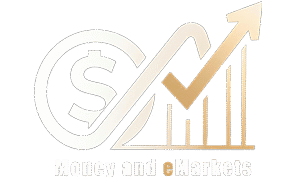Running a successful business requires more than just a great product or service. It demands meticulous financial planning, and at the heart of that planning lies a well-crafted business budget. A budget isn’t just a list of expenses; it’s a roadmap, a strategic tool that guides your financial decisions, helping you anticipate challenges, capitalize on opportunities, and ultimately, achieve your business goals. However, many businesses struggle to create a budget that truly works, leading to financial uncertainty and missed opportunities. This comprehensive guide will help you develop a business budget that’s not only functional but also flexible and adaptable to the ever-changing landscape of the business world.
Understanding the Importance of a Business Budget
A well-defined budget serves as a critical benchmark for financial performance. It allows you to track your income and expenses, identify areas where you’re overspending, and make informed decisions about resource allocation. By forecasting future financial needs and potential challenges, a budget empowers you to proactively address issues before they escalate into crises. It’s not just about tracking the past; it’s about shaping the future. A strong budget fosters a culture of financial responsibility, ensuring that your business operates within its means and maximizes profitability. It provides a clear picture of your financial health, allowing you to make data-driven decisions that drive growth and sustainability.
Key Elements of a Functional Business Budget
Creating a robust budget involves more than just jotting down numbers. It requires careful consideration of various factors. These key elements are crucial for a budget that truly works:
- Detailed Income Projections: Accurately predicting your revenue streams is paramount. Consider historical sales data, market trends, and projected growth rates to develop realistic revenue forecasts. This should include not just sales, but also any other income sources like investments or service fees.
- Comprehensive Expense Categorization: Don’t just lump expenses together. Categorize them into manageable groups (e.g., salaries, rent, marketing, utilities) to gain a clear understanding of where your money is going. This allows you to identify areas for potential cost reduction and optimization. Include both fixed and variable expenses in your budget.
- Realistic Financial Assumptions: Avoid overoptimism. Base your budget on realistic assumptions about market conditions, competitor actions, and potential economic fluctuations. Building in a buffer for unexpected events is crucial for long-term stability.
- Clear Financial Goals: Establish specific, measurable, achievable, relevant, and time-bound (SMART) financial goals. Whether it’s increasing profitability, expanding operations, or achieving a specific cash flow target, your budget should align with these goals.
Strategies for a Budget That Adapts
A static budget is a recipe for disaster in a dynamic business environment. Flexibility is key. Regularly review and update your budget to reflect changes in the market, operational needs, and your overall business strategy. This iterative process will ensure that your budget remains a relevant and effective tool.
Implementing a Continuous Improvement Cycle
- Monthly Review and Adjustments: Regularly compare actual results to your budget projections. Identify any significant variances and analyze the reasons behind them. Make necessary adjustments to your budget to account for these variances.
- Quarterly Performance Analysis: Take a deeper look at your performance over a longer period. This analysis should identify trends and patterns in your income and expenses, helping you make more informed long-term decisions.
- Annual Budget Revision: Assess your overall business performance and adjust your budget based on the lessons learned throughout the year. This is a crucial step for aligning your financial plan with your evolving business strategy.
Conclusion
Creating a business budget that works isn’t a one-time task; it’s an ongoing process of refinement and adaptation. By focusing on detailed income projections, comprehensive expense categorization, realistic assumptions, clear financial goals, and a continuous improvement cycle, you can create a powerful tool that guides your business toward financial success. Embrace the process, stay adaptable, and watch your business thrive as you navigate the complexities of the market. A well-crafted budget is not just a financial document; it’s a strategic blueprint for achieving your business aspirations.

